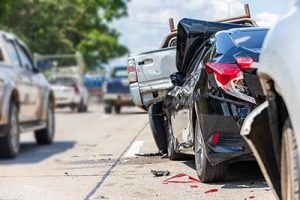
Americans lose an average of $564 per year wasting time sitting in traffic congestion.
Personal finance website WalletHub released its report 2022’s Best & Worst Cities to Drive In to determine the most driver-friendly places in the United States.
WalletHub compared the 100 largest American cities across 30 key metrics. Data includes average gas prices, annual hours in traffic congestion per commuter and auto repair shops per capita.
According to the report, the best city to drive in is Raleigh, N.C., followed by Plano, Texas, Corpus Christi, Texas, Greensboro, N.C. and Winston-Salem, N.C. Orlando, Fla. is no. 10 on the list of best cities to drive in.
On the other end, the worst city to drive in is Philadelphia, followed by Detroit, Oakland, Calif., San Fransisco, Calif., and Chicago. Rounding out the top 10 worst cities to drive in are New York City, Washington, D.C., Baltimore, Md., Seattle and Los Angeles.
The lowest traffic fatality rate per 100,000 residents is in Honolulu at 2.30, which is 14.9 times lower than Memphis’s 34.26, the highest fatality rate.
In Gilbert, Az., per 1,000 residents are the fewest car thefts at 0.58, which is 26.4 times fewer than in Oakland, Calif., the city with the most at 15.33.
The lowest average gas price, $3.12 per gallon, is in Laredo, Texas, and is 1.8 times lower than in San Fransisco, the city with the highest at $5.46 per gallon.
Corpus Christi, Texas has the lowest average parking rate at $1 for two hours, which is 38.4 times lower than in Boston, which has the highest parking rate at $38.40 for two hours.
Experts offered saving tips for drivers while gas prices are on an upward trend.
“Try to limit travel at speeds higher than 65 or 70 mph,” Professor and Faculty Fellow at Texas A&M University Dominique Lord said in a press release. “It has been shown that the optimal speed is about 55 mph, where going above or below that value will increase gas consumption. Hence, going slightly faster than 55 mph may be reasonable. Try to reduce sudden acceleration or deceleration events, which increase fuel consumption.”
According to Dr. Hesham A. Rakha, Professor and Director of the Center for Sustainable Mobility at Virginia Tech Transportation Institute, drivers should choose gas-efficient routes.
“Faster travel time routes are not necessarily more energy efficient. Do not be aggressive on the gas pedal. We found that the top 10 percent of the aggressive events on a trip consume 25 percent of the total fuel of the trip,” Rakha said.
When will more self-driving vehicles be on American roads than human-driven vehicles?
“We have a very long way to go before that will happen — probably 75-100 years,” Dr. Daniel V. McGehee, Director of the National Advanced Driving Simulator, Industrial and Systems Engineering; Emergency Medicine, Public Health, Public Policy at University of Iowa, said in a press release. “It will take over 25 years for 90 percent of the U.S. fleet to have Advanced Driver Assistance Systems (ADAS) like adaptive cruise control, automatic emergency braking and lane keeping (which is not automation).”
Professor and Chair of the Department of Civil and Environmental Engineering at UVA Brian L. Smith said it will take time for a large number of self-driving vehicles to be seen on American roadways. The majority will be in cities with on-demand services, such as Uber and Lyft.
“It will take longer to see them in more suburban and rural areas. The exception to this will be large trucks. I expect to see partially automated platoons of trucks in the near future to allow for more efficient and safe freight movement,” Smith said in the press release.
Experts offered opinion on what local authorities can do to reduce traffic and improve safety.
“Investments in balanced, resilient transportation systems that focus on moving people and goods instead of vehicles are a good place to start,” Dr. Kyle Shelton, Director of the Center for Transportation Studies at the University of Minnesota, said in the press release. For instance, in urban areas, quality public transportation operated by professional drivers not only moves people more efficiently and safely than single-occupancy vehicles, but also frees up roadway space for shippers and commercial and emergency vehicles…Building streets in ways that encourage a range of users to interact safely is a must. Most roads today are oriented towards drivers. This orientation leaves other users on the periphery and, lacking infrastructure, puts vulnerable users such as pedestrians and folks on bikes at risk…The way we engineer our roads, especially those with multiple users, can go a long way toward signaling to drivers how to share space.”
McGehee said that local authorities can enact hands-free only laws when it comes to smartphone use while driving, as well as have and enforce seatbelt laws for all seating positions, lower BAC levels to 0.05 percent or higher, and enact strict teen driver license systems.










